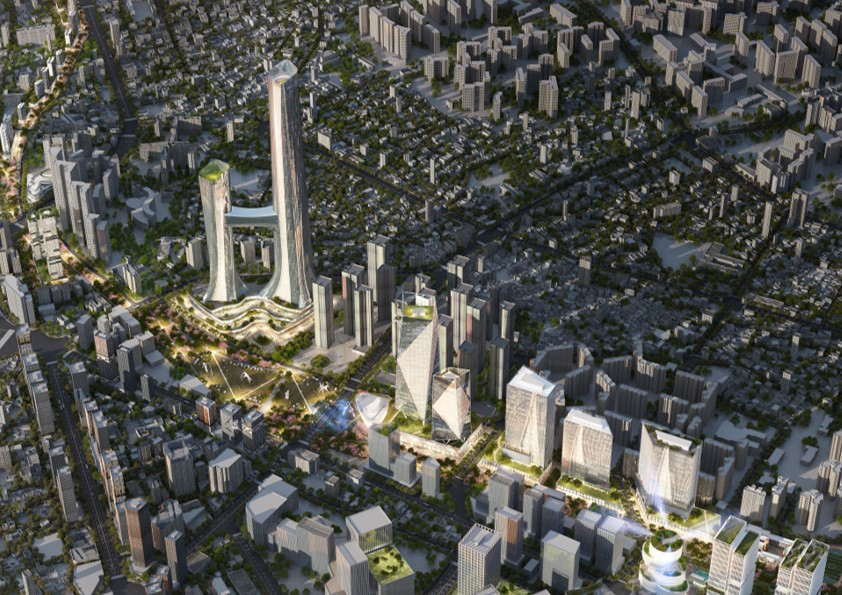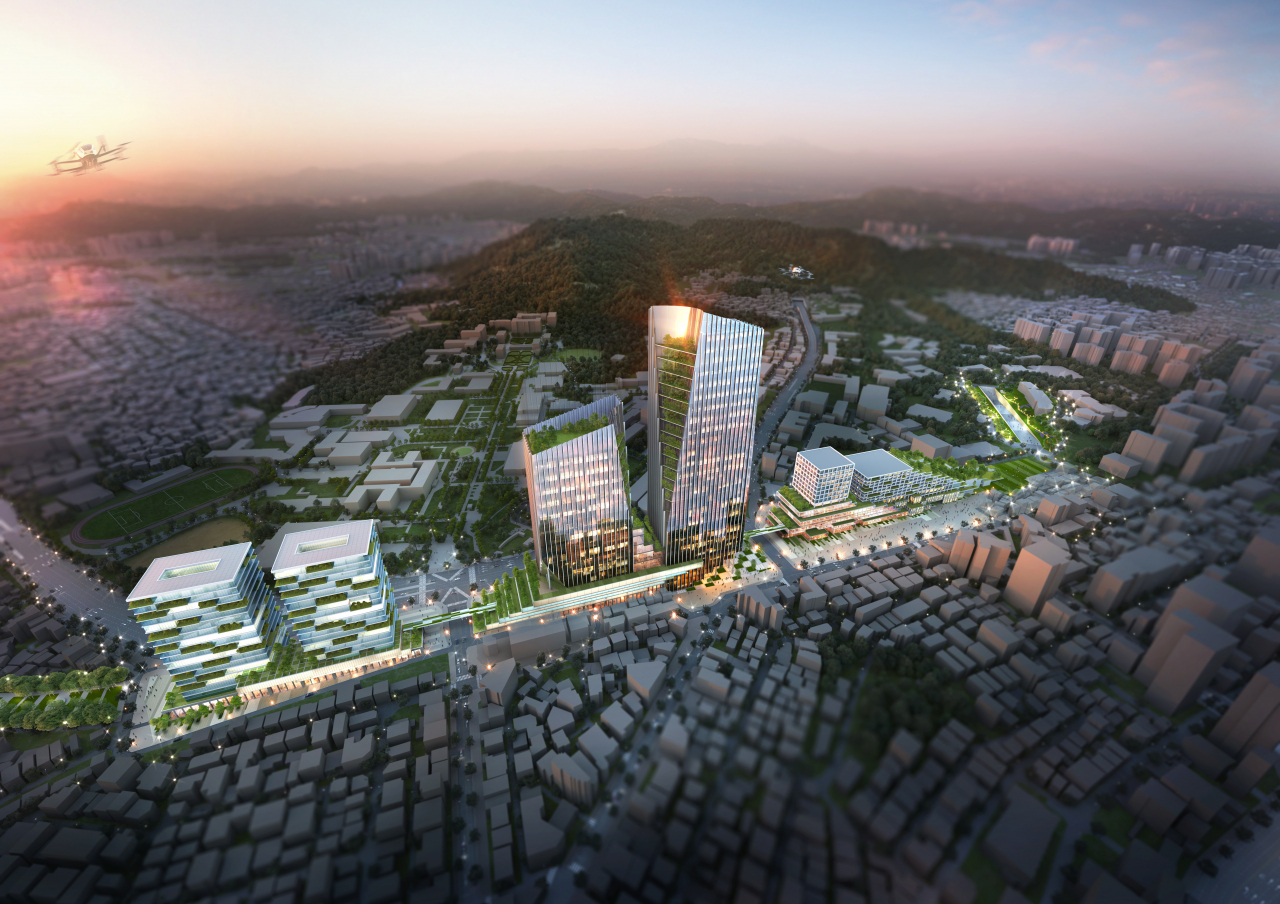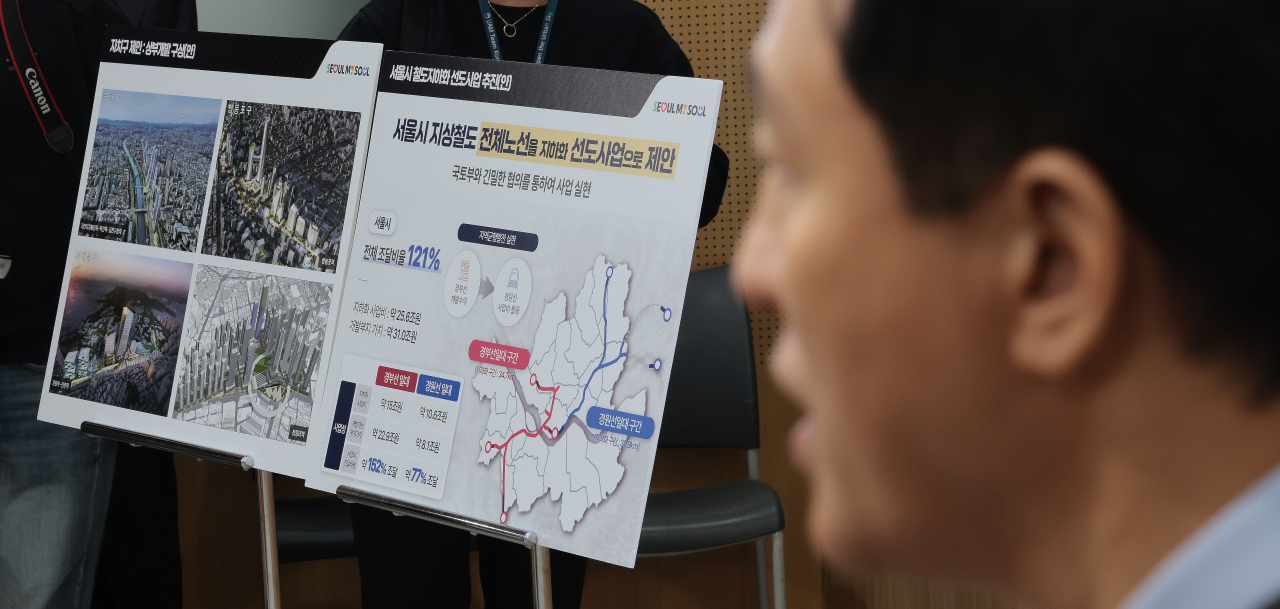
 |
| Seoul Mayor Oh Se-hoon presents the underground railroad development plan at Seoul City Hall in Seoul, on Wednesday. (Yonhap) |
The Seoul Metropolitan Government announced its plan on Wednesday to convert 68 kilometers -- or 94 percent -- of the city’s above-ground railway network into an underground network. The space for ground railways as well as station buildings will be turned into parks, and commercial and cultural facilities.
Currently, Seoul has 71.6 kilometers of above-ground railway across six lines, running through 15 out of 25 districts. The conversion includes 34.7 kilometers of the Gyeongbu Line and 32.9 kilometers of the Gyeongwon Line, affecting a total of 39 stations. Among these stations are: Seobinggo, Dobongsan, Cheongnyangni, Mangu, Sinnae, Gajwa, Guro and Oryudong.
"Once a driving force for urban growth, railways helped areas around major stations become central hubs. However, the above-ground railways and stations have now become obstacles to urban development due to issues such as noise, vibration, dust, disconnection from central areas, and surrounding neighborhood decay," said Seoul Mayor Oh Se-hoon while unveiling the plan at the city hall.
 |
| Illustration of the transformed Yeongdeungpo Station area with new parks after railway undergrounding. (The Seoul Metropolitan Government) |
This project includes a plan to transform 1.22 million square meters of railway land into a vast linear park, similar to the Gyeongui Line Forest Park, also known as Yeontral Park. This park has revitalized abandoned space above the Gyeongui railroad line by combining public green areas with underground rail tracks.
This project also includes the development of 1.715 million square meters of station sites into mixed-use complexes featuring offices, shopping malls, performance venues and cultural facilities, which are expected to enhance economic activity and urban vitality, according to the city government.
The cost of the project is estimated at 25.6 trillion won ($18.5 billion). But the profits of developing these spaces for commercial use are projected to reach 31 trillion won, according to the city government.
"Based on technical evaluations, the total cost for burying the railway sections is projected at 25.6 trillion won, with 15 trillion won allocated for the Gyeongbu Line area and 10.6 trillion won for the Gyeongwon Line area," a city official said.
"The city estimates that the project can be realized without requiring additional budgetary input from the city's finances, anticipating total development revenue to reach 31 trillion won. Of this revenue, approximately 22.9 trillion won is expected from the Gyeongbu Line area and 8.1 trillion won from the Gyeongwon Line area."
 |
| Illustration of the transformed Sinchon Station area with new parks after railway undergrounding. (The Seoul Metropolitan Government) |
Specifically, to fund this project, landowners such as Korail will provide the underground railway land and use it as collateral to issue construction bonds, thus securing the necessary funding, according to Seoul city. Korail plans to sell the newly created surface-level spaces to private developers and use the proceeds from these sales to repay the debt incurred by the project.
The project, targeting the southwestern and northeastern parts of Seoul, holds significance for balanced urban development. It aims to improve the quality of life in these historically underserved areas. "This initiative promotes growth in underdeveloped regions in the city, thereby enhancing urban balance," the official added.
The city anticipates that the project's design could begin as early as 2027. Following the groundbreaking in 2028, the construction underground is expected to take at least five years. An additional minimum of 10 years will be required for the development of the space above, according to the city.
 |
| Seoul Mayor Oh Se-hoon presents the underground railroad development plan at Seoul City Hall in Seoul, on Wednesday. (Yonhap) |
"Seoul residents have a strong desire for burying the railways underground more than in any other region," according to Oh, "And this transformation can significantly enhance our city's competitiveness."
"We will push forward this underground railway project smoothly, ensuring improvements in people's quality of life through continuous collaboration with the Ministry of Land, Infrastructure and Transport," he said.









